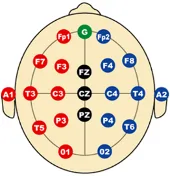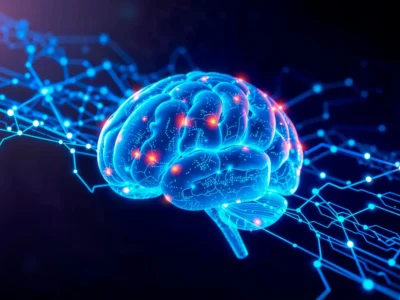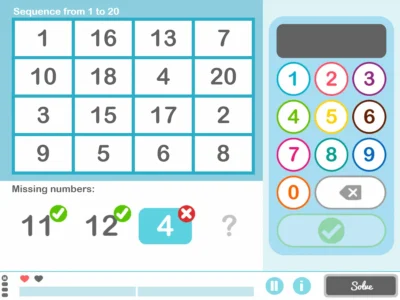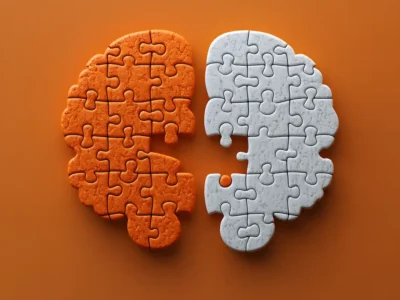Treatment with neurofeedback and executive function training with NeuronUP in a boy with ADHD
15-year-old boy assessed with psychoeducational tests and Swingle’s ClinicalQ whose intervention, given the results, was decided to be dual. It was carried out using the neurofeedback technique and executive function training with the NeuronUP platform for this ADHD case.
Case presentation
The parents, residents in the USA, came to the center for the assessment of their son during a brief stay in our country. Several age-appropriate tests were administered such as: BAS II, MATRICES, the D2 attention test, CARAS-R, AGL attentional, Stroop, MY memory, PROLEC-SE for reading and writing processes, DSM-IV diagnostic criteria and data were also collected through the BRIEF and SENA questionnaires via family report and self-report and finally the ClinicalQ.
Tests
In these cases you must always collect data and, according to these (initial questionnaires, visual symptom, auditory, …) adjust the assessment tests. Although to confirm or rule out the existence of a diagnosis you must always administer intelligence, attention, etc. tests, in order to establish an appropriate intervention plan you must always decide whether to probe other areas (such as motor, visual, auditory, performing an audiometry, etc.).
Results of combining neurofeedback and NeuronUP treatment in ADHD
In the present case the results were the following. High IQ on the BAS II, accompanied and coherent with a high percentile on the MATRICES test of nonverbal intelligence, average result on the memory test (enneatype 5), effective results on the CARAS-R test, average on the longer D2 and on the AGL, results within the average on the STROOP and in the reading and writing processes.
The feedback from the teachers (it is important to collect the quantitative data from the tests and also analyze what they observe in the academic context through questionnaires to the teachers) concluded problems in sustained attention.
Given the ambiguity of the results obtained a ClinicalQ was performed.
What is a ClinicalQ?
The Clinical Q is a 5-point mapping of the 10/20 system performed using a neurofeedback device with a single-channel monopolar montage. It is an assessment that determines the design of treatment with neurofeedback.
We perform the measurement at the brain locations related to the functions to be evaluated: central area (Cz), frontal (F3/F4 /Fz) and occipital (O1).

The profile is made by placing the electrodes successively in the different locations and performing different cognitive-type activities (each of these phases is called “events”) with the patient relaxed, in order to be able to record in real time the pattern of brain waves in each of those activities, to be able to compare it with the values, as well as see the evolution of that pattern in relation to the activities carried out.
The EEG profile gives us information about the level of brain activity in real time and thus determine the best treatment options.
ClinicalQ results:

The Theta/Beta ratio (TBR), or the fast/slow wave ratio in the EEG is a very common measure in neurofeedback treatments. High levels of theta and/or reduced levels of beta are typical in cases of ADHD and attention problems.
Applications: TBR training is mainly used in the treatment of ADHD and more broadly in the fields of attention training, in the improvement of learning and performance.
The Theta/Beta ratio is calculated by dividing absolute Theta power (4-8 Hz) by absolute Beta power (13-21 Hz). For training, central locations (Cz, C3 and/or C4) are chosen.
Objective: reduce the Theta/Beta power ratio, reduce the lack of attention and decrease hyperactivity and/or impulsivity in eyes-open condition.
Conclusions on neurofeedback and NeuronUP treatment in an ADHD case
According to the data collected from the tests, our subject affected by ADHD would need executive function training with NeuronUP that were below average such as: working memory (especially the auditory component), reinforcement of the verbal part (vocabulary and expression), sustained attention, mental flexibility and planning.
And in parallel, and according to the ClinicalQ data, work on the Theta/Beta ratio at Cz with neurofeedback.
Training from the USA
The dilemma arose of how to fulfill this intervention suggestion if the evaluated subject resides habitually in the USA.
We contacted a neurofeedback center near the subject’s residence that uses the neurofeedback technique (and the same equipment with which he was evaluated) and they began working with him using that protocol.
And in parallel the executive function training sessions are being updated with the NeuronUP platform.
The platform facilitates the adjustment of the exercises, those that have been more difficult, those that have produced better results, worse… information that we can also use to continue adjusting not only the levels or difficulty phases but also the exercises and their order of presentation to also foster adherence to treatment and motivation toward the work.
Intervention in English and Spanish
As a work objective it was also defined to strengthen the language part, being important to carry it out both in his native language and in the one he ordinarily uses, English.
The NeuronUP platform has allowed us to fully adapt to the needs of this case since the training part is carried out in a varied way.
- Remote with NeuronUP2GO.
- Training of executive function with the verbal component in Spanish.
- Training of the executive function with the verbal component in English.
Therefore, it is important to point out the performance of tailored assessments as complete as possible to define the objectives and the treatment plan. In addition, knowledge of the assessment tests and knowing what they measure and the limitations they have is essential.
Finally, it is essential to be in continuous training in the field of neuropsychology to offer the most complete assessments and tools in order to establish the most appropriate and optimal intervention plan and that it offers the best results.
References
Swingle, Paul, Adding Neurotherapy to Your Practice Clinician’s Guide to the ClinicalQ, Neurofeedback, and Braindriving, 2015. Ed.Springer
www.sebine.org/neurofeedback/
If you liked this post about the treatment with neurofeedback and NeuronUP in a case of ADHD, you might be interested in these publications from NeuronUP:
“This article has been translated. Link to the original article in Spanish:”
Tratamiento con neurofeedback y NeuronUP en un caso de TDA global







 Painting Alzheimer’s
Painting Alzheimer’s
Leave a Reply